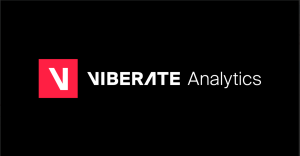Reasons Why You Should Use Intelligent Cloud Security Posture Management

For years security and data confidentiality concerns kept business leaders reluctant to make the switch to cloud solutions. But in recent years, cloud storage and solutions have revolutionized and paved the way for large-scale adoption by small start-ups to large-scale organizations. Let’s see the reasons why you should use intelligent cloud security posture management.
However, with the wider adoption of cloud resources, leaders fail to recognize some inherent security risks or assume that the cloud provider is completely responsible for security. As a result, organizations tend to overlook cloud security controls and are exposed to several security risks over time.
According to Gartner’s article, over the next five years, 90% of the organizations that fail to control public cloud use will inappropriately share sensitive data. And 99% of cloud security failures will be the customer’s fault.
This is why it’s highly recommended to invest in CSPM – Cloud Security Posture Management tools and processes to avoid costly misconfigurations that can go haywire and lead to security breaches. Reach out to service providers like sonraisecurity.com/use-cases/cspm/ to know how organizations can manage cloud security proactively by automatically identifying and remediating security risks before they even arise.
Here are the top reasons why you should consider a CSPM solution for your cloud infrastructure:
- Manage Misconfigurations
Cloud providers are responsible for securing the infrastructure cloud stack. However, it is the user’s responsibility to configure the cloud and secure applications and data. Misconfigurations are prevalent in cloud infrastructure.
This is primarily because of the inherently programmable cloud model to integrate using APIs and the size and complexity of enterprise cloud environments that make it difficult to monitor resources.
An effective CSPM solution continuously checks for misconfigurations so that appropriate call-to-action steps can be taken to remediate the issue before it takes over.
2. Automate Compliance
You should incorporate CSPM solutions and practices to enforce compliance requirements to support automated benchmarking and auditing of your resources or components right from inception.
You can create your framework or use specific benchmarks released by regulatory bodies to evaluate configurations and ensure that they are working as expected.
3. Continuous Visibility into Multiple Cloud Environments
The proliferation of cloud resources has led to a high level of complexity, and so organizations are not aware of how many resources are running and how they are configured.
Thanks to the growth of novel container environments such as Kubernetes and serverless Lambda functions, several resources are managed that extend beyond servers, networks, and databases. CSPM tools enable complete visibility into the public cloud infrastructure and help identify risks and classify them.
4. Employ CSPM as a Security Powerhouse
Along with continuous monitoring, automation, and proper configuration, CSPM can be used to incorporate security checks into your development pipelines for great agility and speed. You can stay prepared and enforce security checkpoints to ensure that misconfigurations are avoided even before they reach production.
As organizations move to the cloud, security is more important to protect sensitive data and monitor potential risks. To learn more about how CSPM can help you gain full visibility into your cloud security, and stay in continuous compliance, visit a service provider.
Table of Contents







